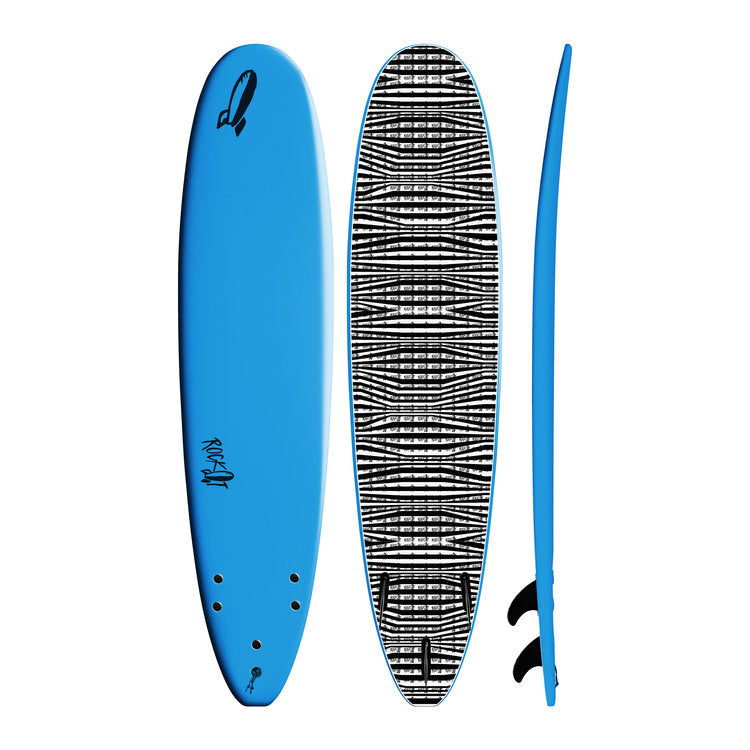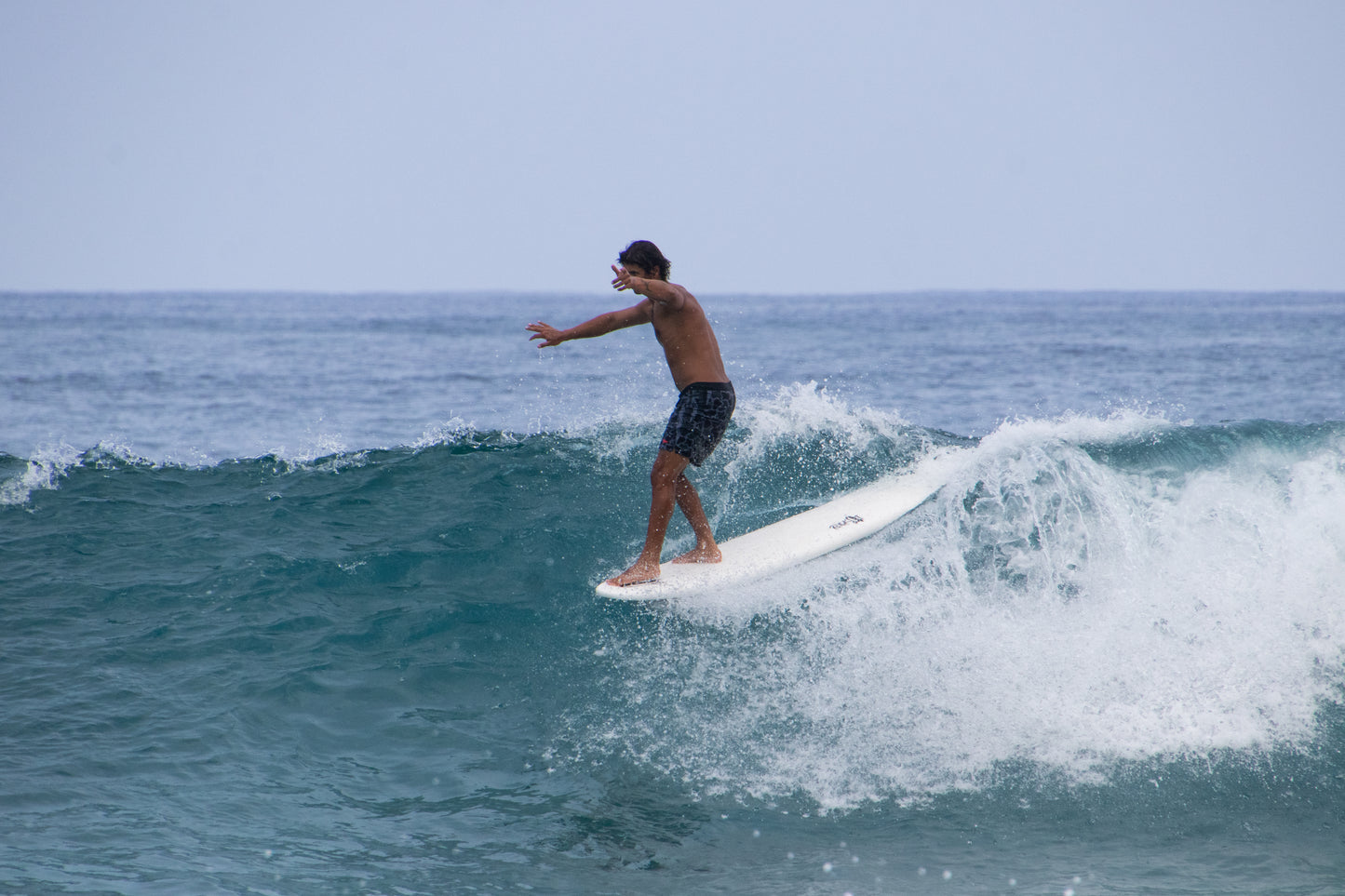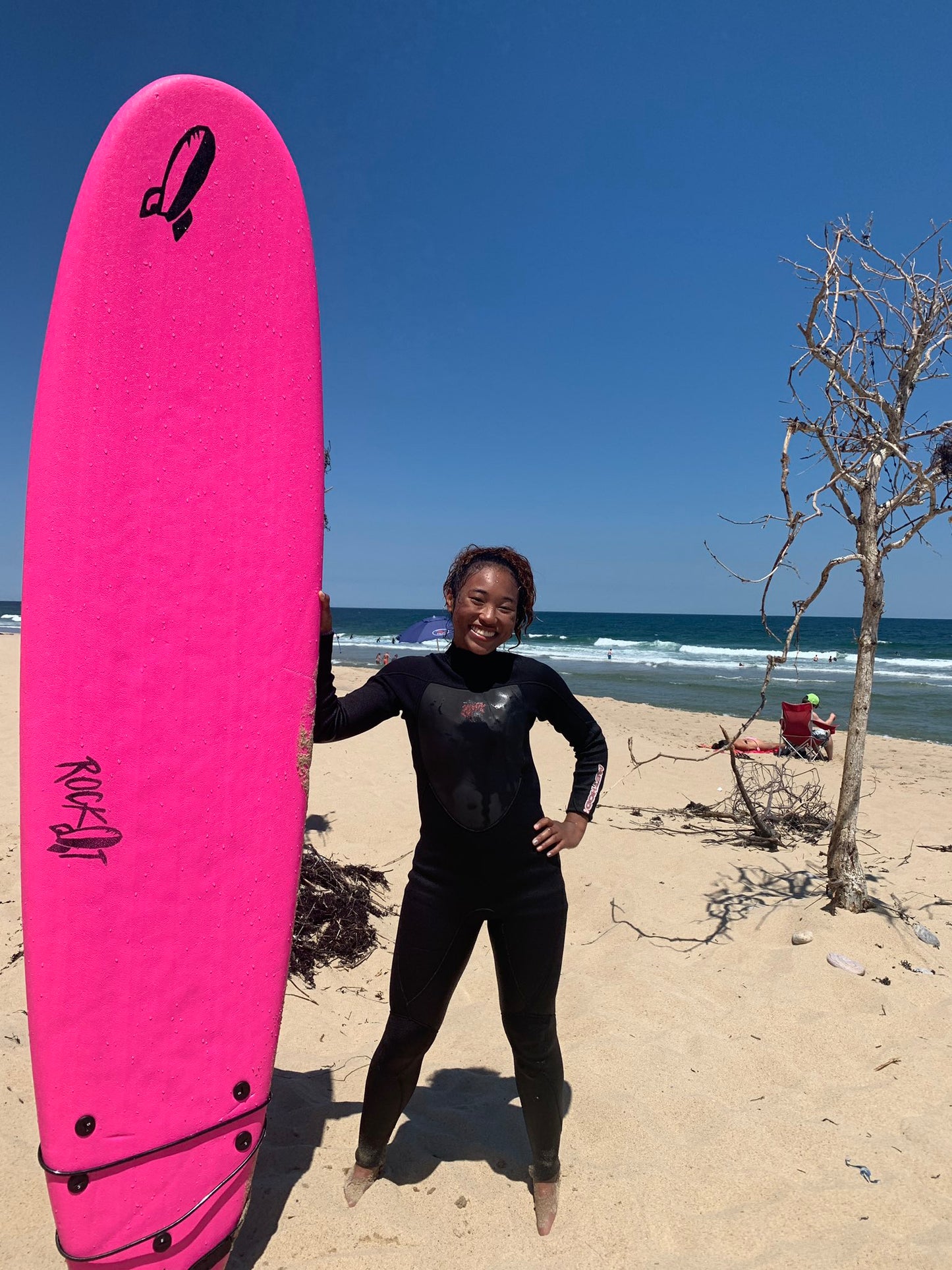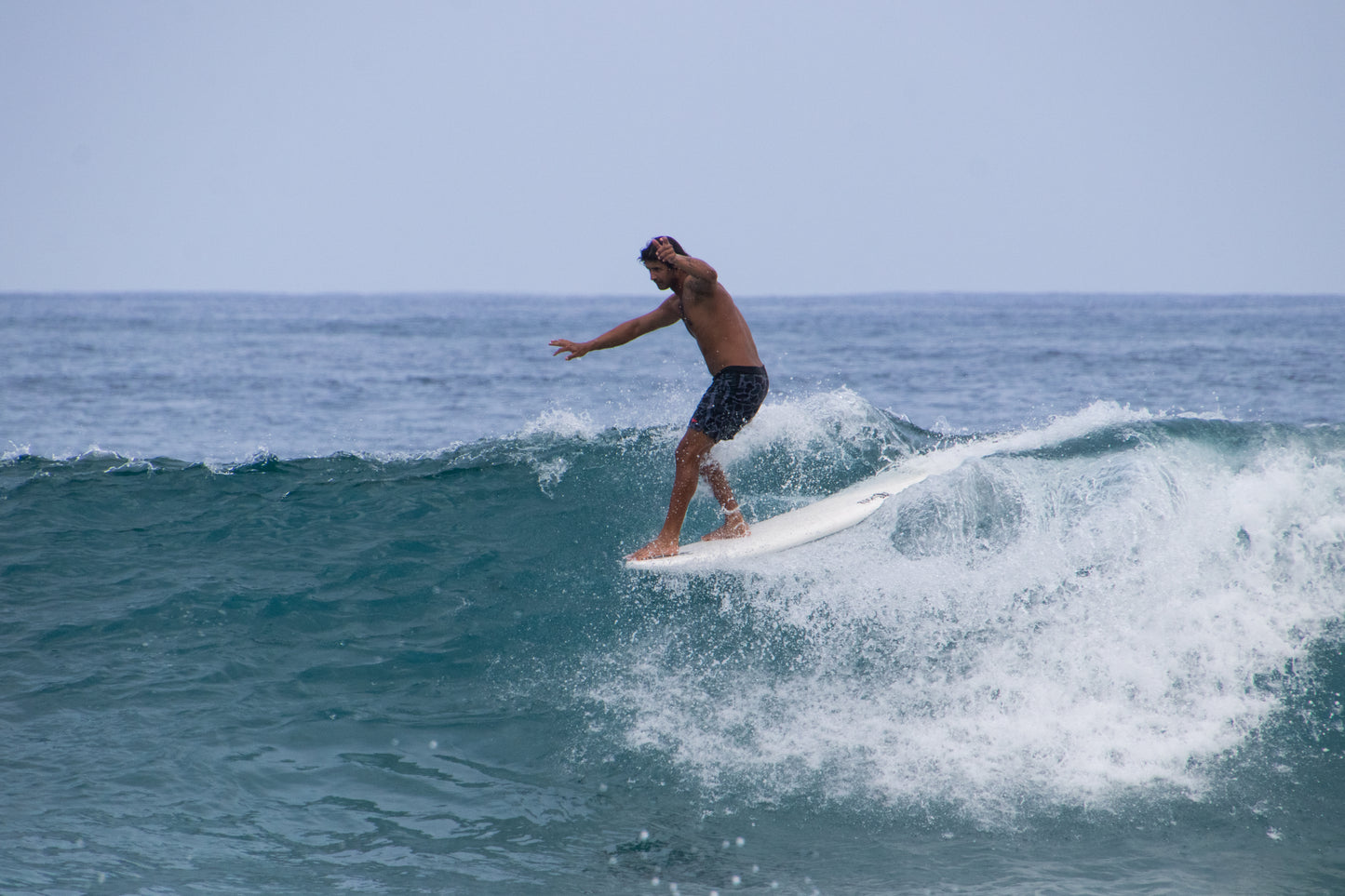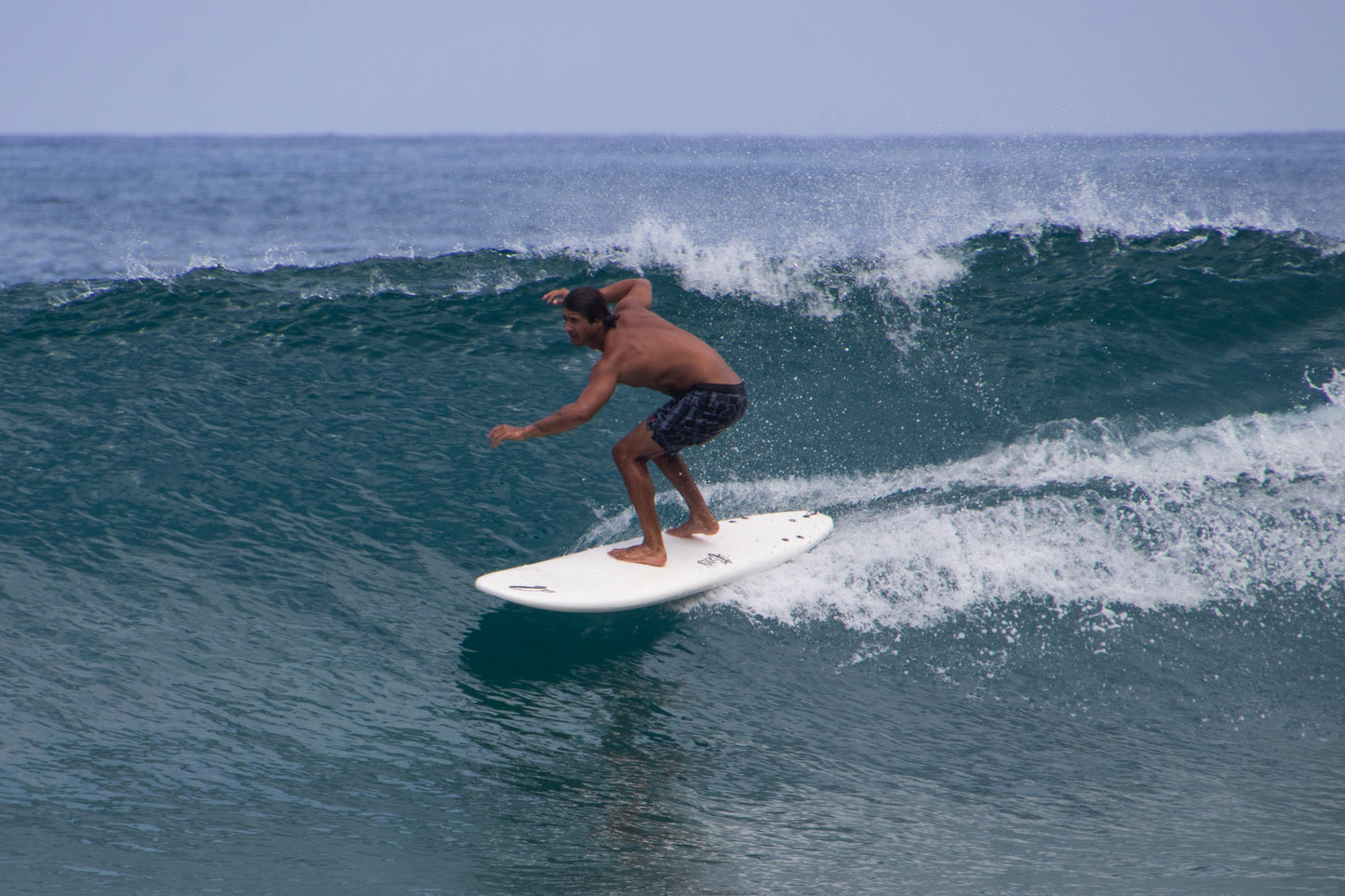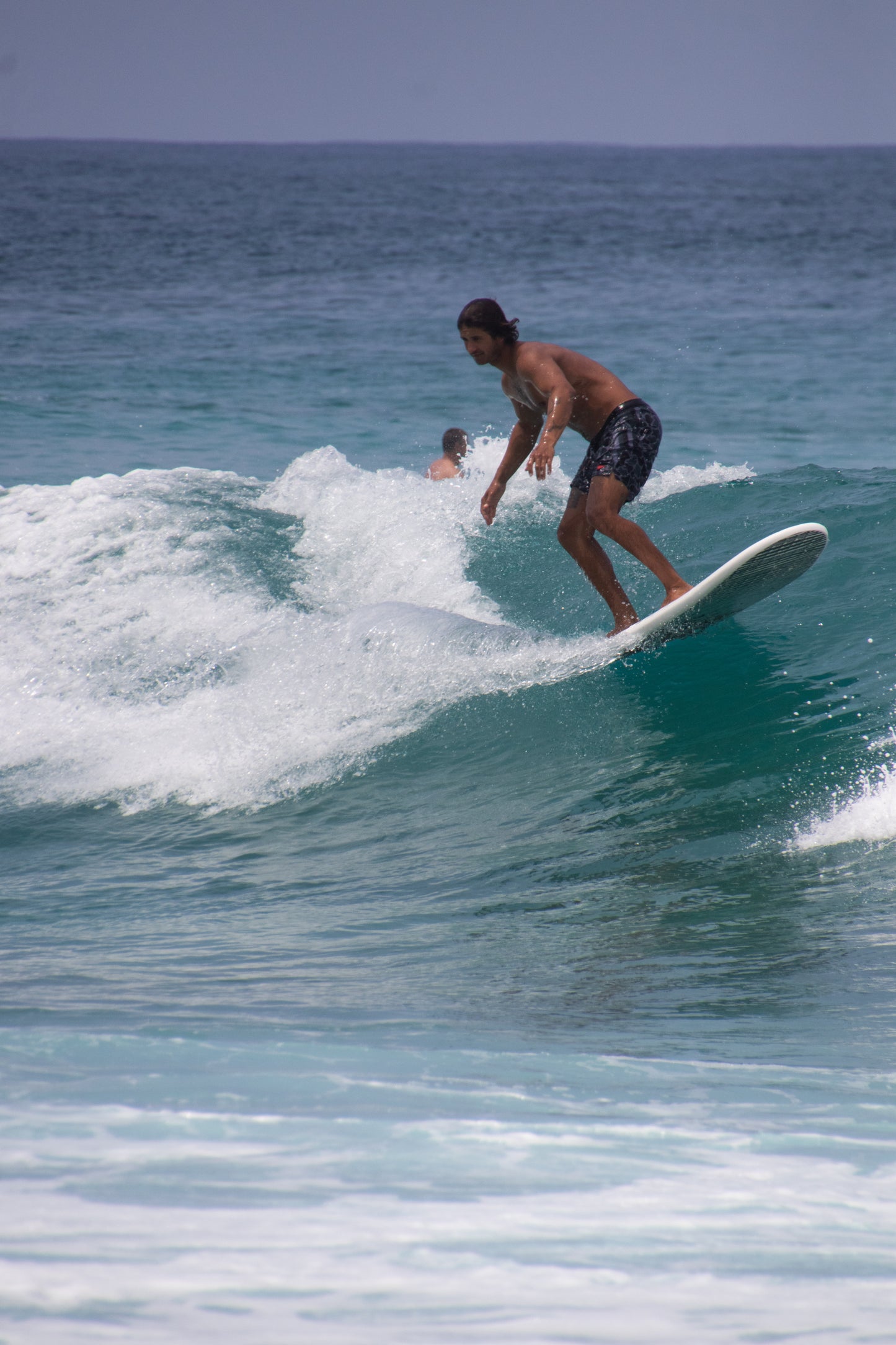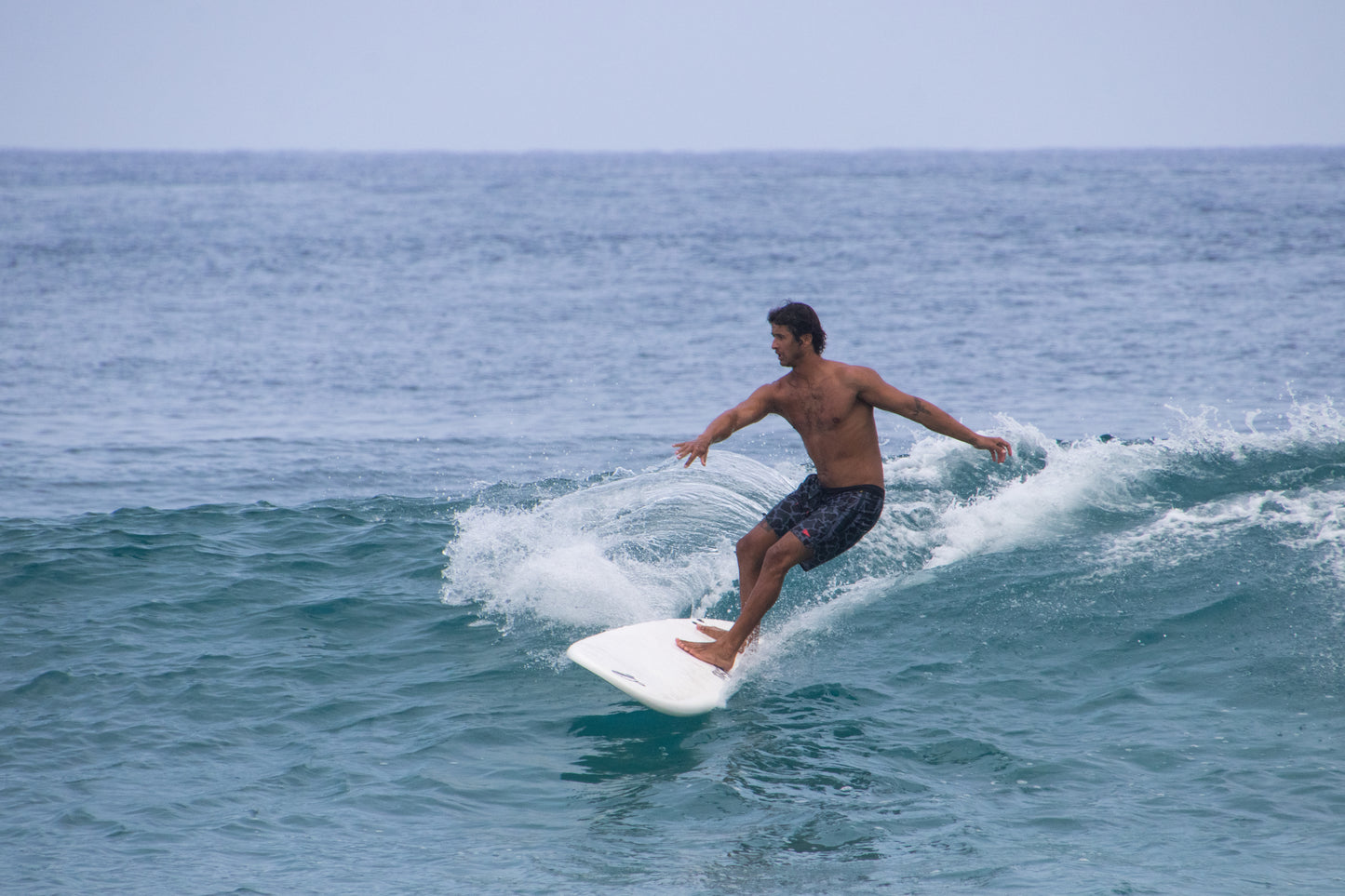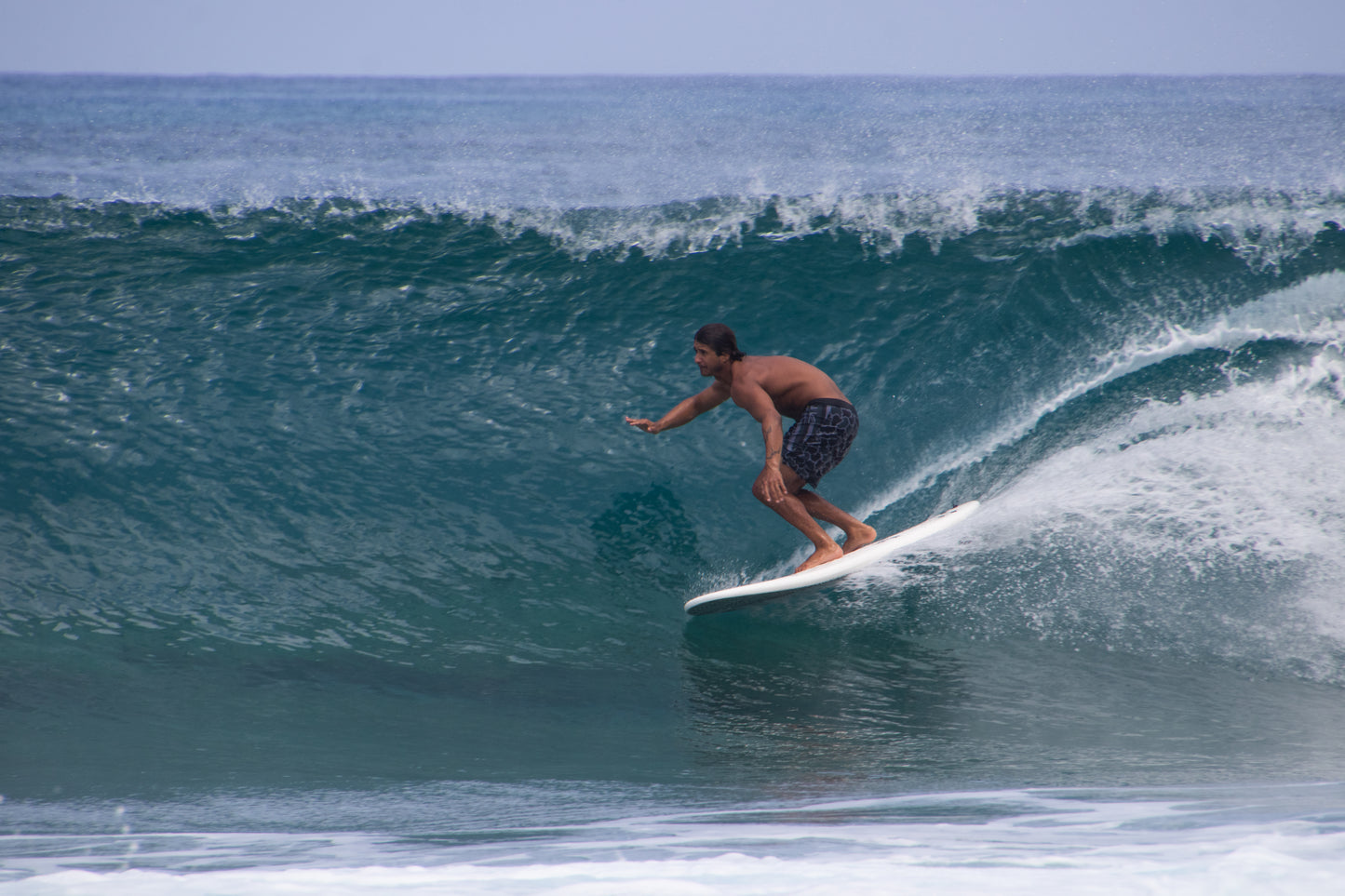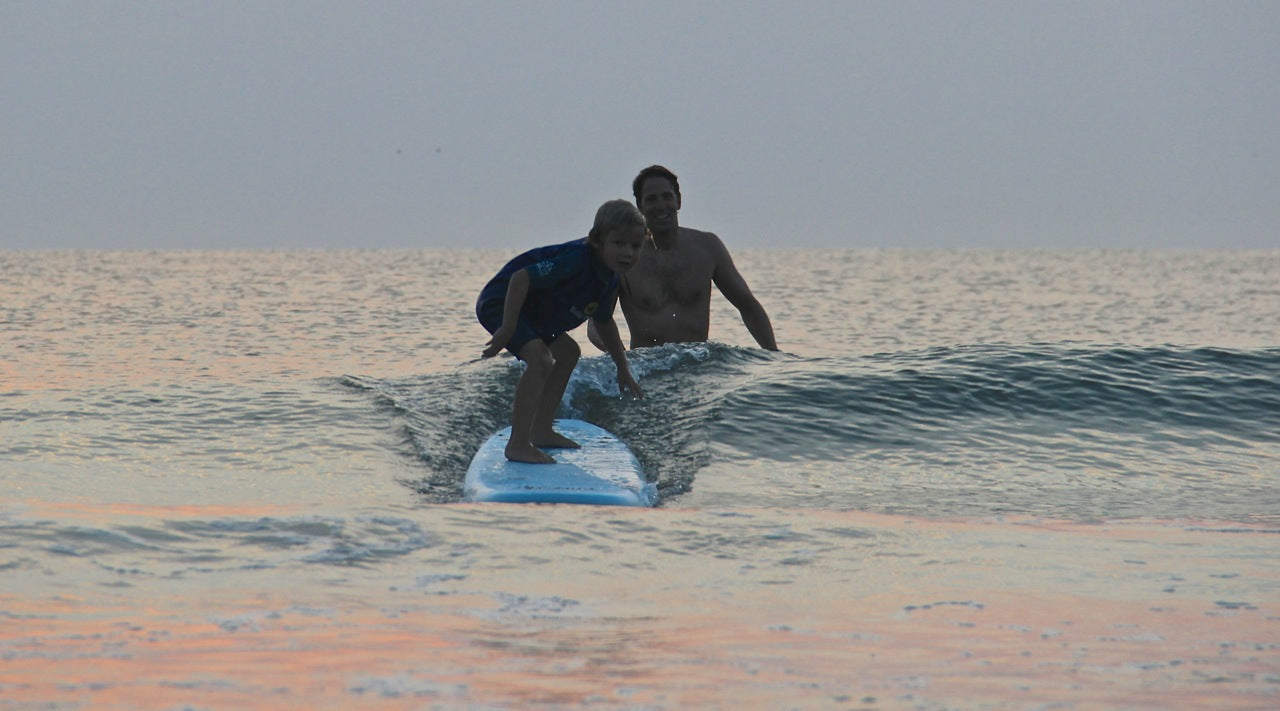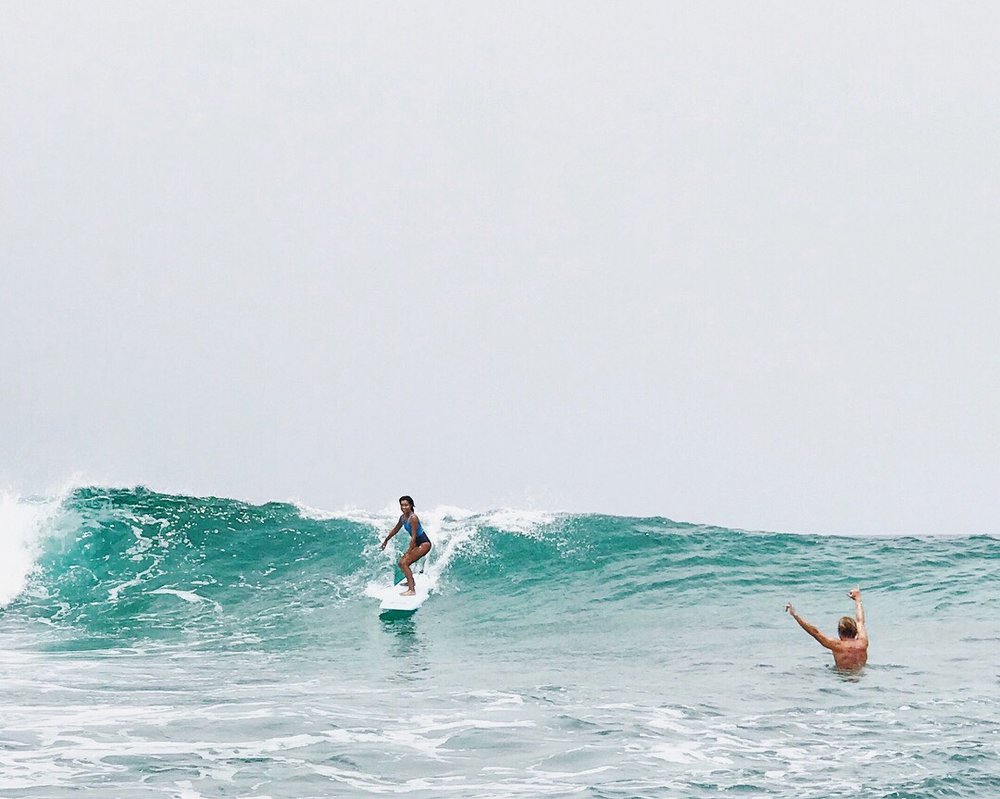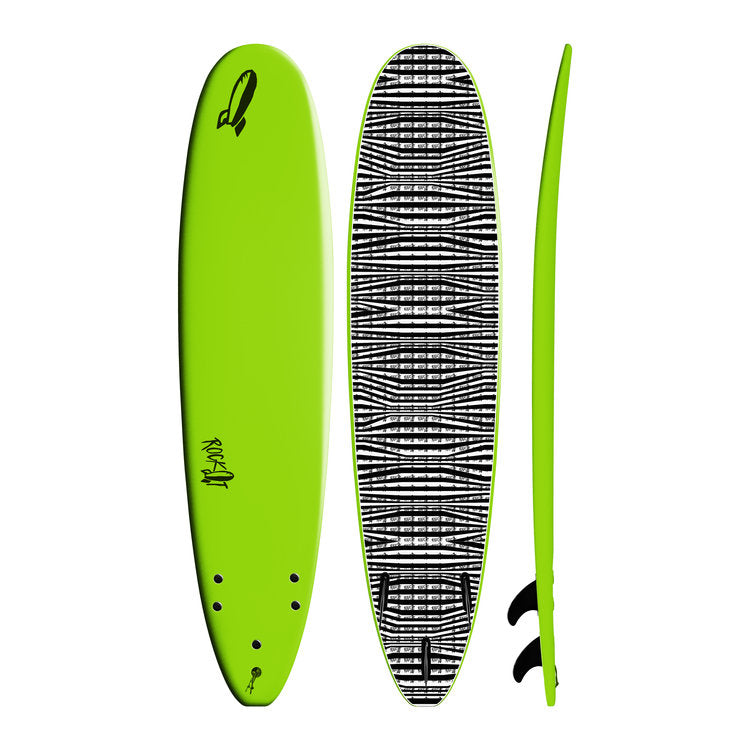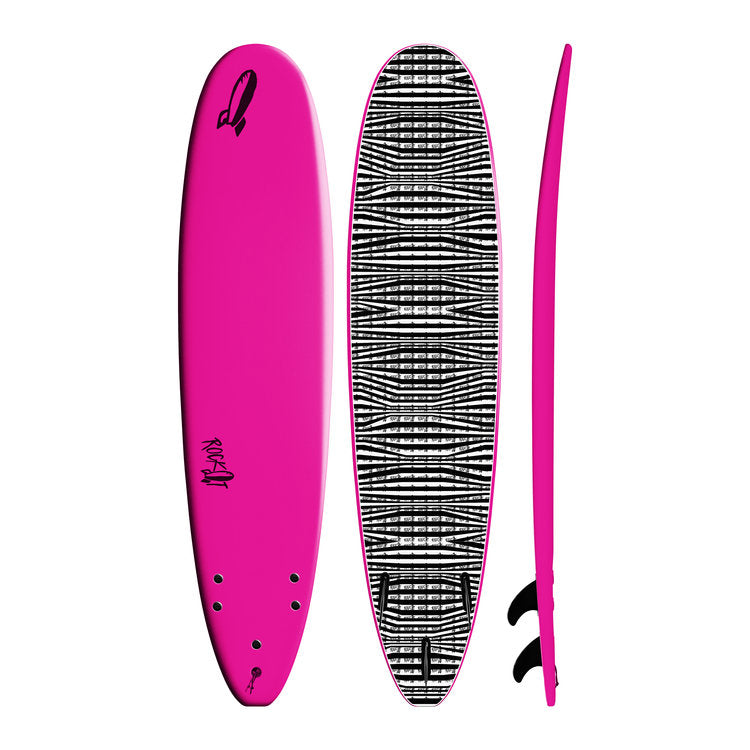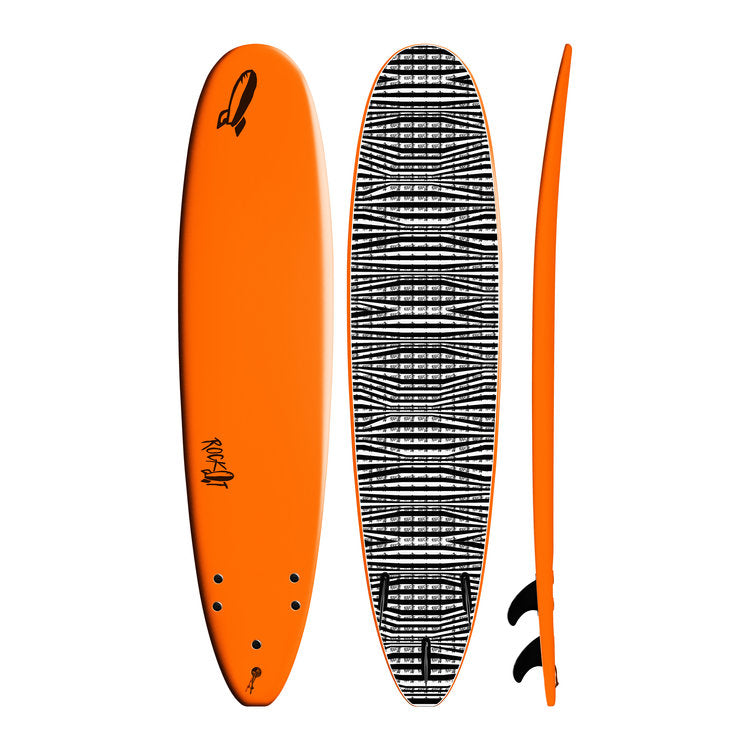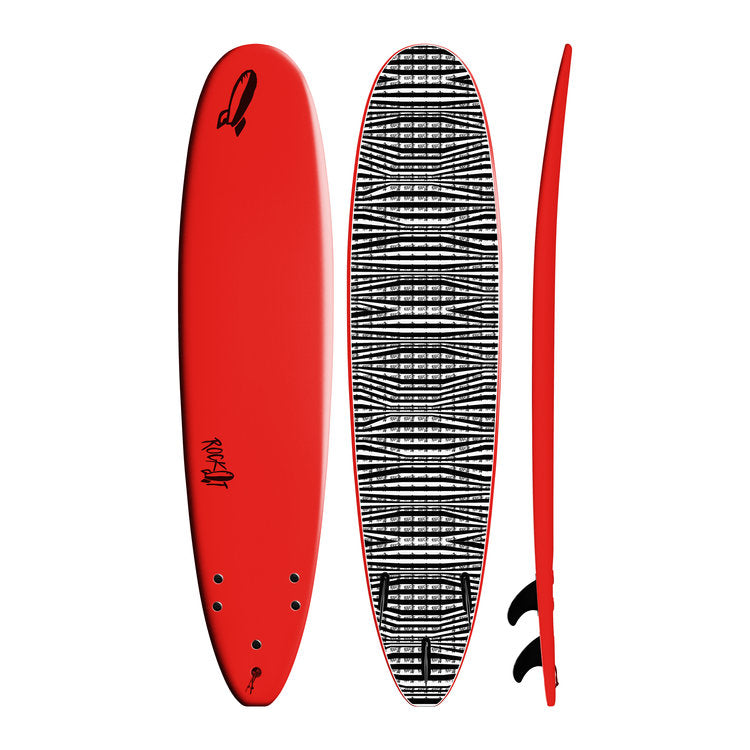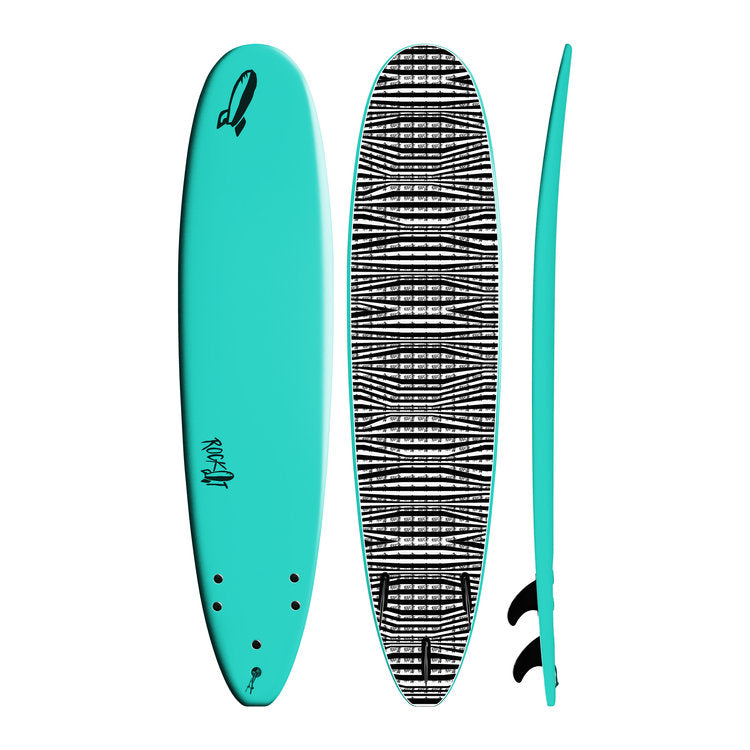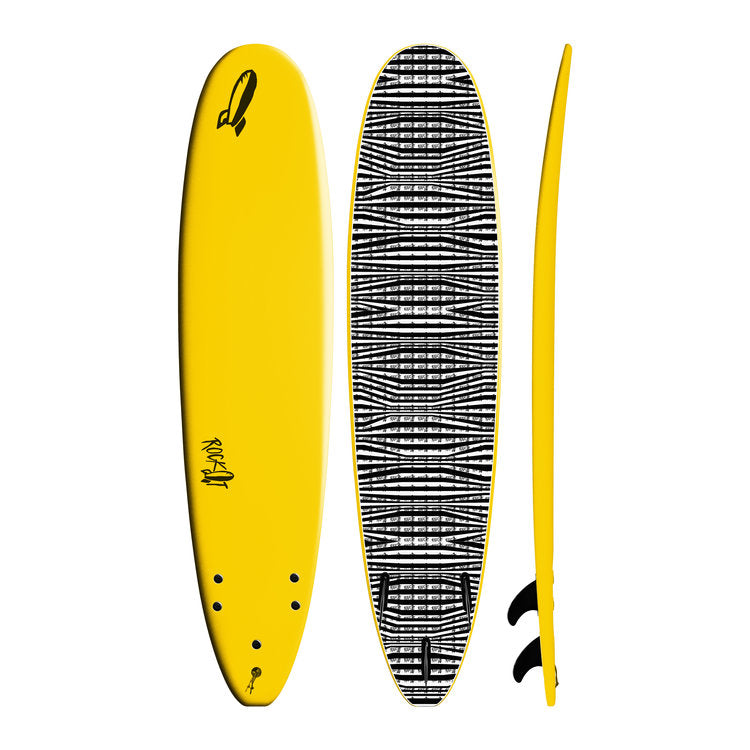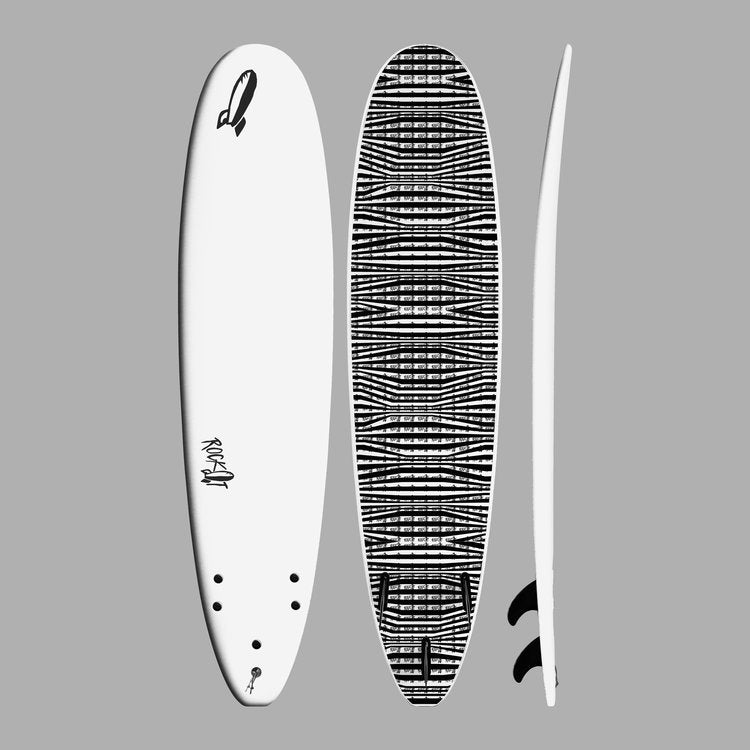Rock-It
8' BIG SOFTY longboard (3-fin)
8' BIG SOFTY longboard (3-fin)
| Minimum Cart Quantity | Discount | Wholesale Price |
|---|
| Minimum Cart Amount | Cart Discount |
|---|
- Best Uses
- Features
- If you want one softboard in your quiver that can do it all…this is it
- 81L of volume means it floats most everyone
- 1-4' waves (even though it can handle much bigger if desired)
- Popular with surf camps/surf schools. Good for both kids and smaller adults to learn on
- Wide profile, wide nose, pulled in tail design makes for great performance as well…so it surfs easy, but surfs good!
- 8' x 23" x 3” / 81 Liters
- 3pc Removable Performance Fins (included) w/fin box system (FCS 1 Compatible)
- Shark Deterrent Bottom Pattern
- 3x Nano-Polymer Coated Stringers
- Fade Resistant Soft Top with grainy texture (no wax required)
Couldn't load pickup availability
- Multiple Colors Available
- Free Leash with Surfboard
- One Year Warranty
96” x 22.7” x 3.3” / 81 Liters
The Rock-It BIG SOFTY is designed to be the easiest board to surf on. Big (but not too big!), buoyant, easy to paddle & turn yet stable. Perfect for beginners or simple summer cruisers!
The Rock-It BIG SOFTY is made with quality construction and environmentally sensitive processes. Three marine wooden stringers are coated with an epoxy nano-coating to resist water absorption, then surrounded with a proprietary EPS foam and a color-fast & UV resistant soft top layer. The soft top has a wide texture and doesn't require wax, although wax will improve grip.
The entire board is heat laminated with no harmful dyes, glues, resins or toxins in the production process, and manufactured in a facility that uses collected rainwater. All materials used are recyclable. All Rock-It surfboards come with a one year warranty against manufacturing defects.
Why the “Sea Camo” Stripes on the bottom? In 2013 University of Western Australia neurobiologist Nathan Hart & entrepreneur Hamish Jolly conducted research that indicated a zebra striped pattern was a deterrence to sharks & presented their results in a Ted Talk. The patterns disperse the shark’s ability to identify the item, and mimic non-food source items in their environment. Of course there are no guarantees, but if there is an indication something could be safer, why not do it?!
Share
